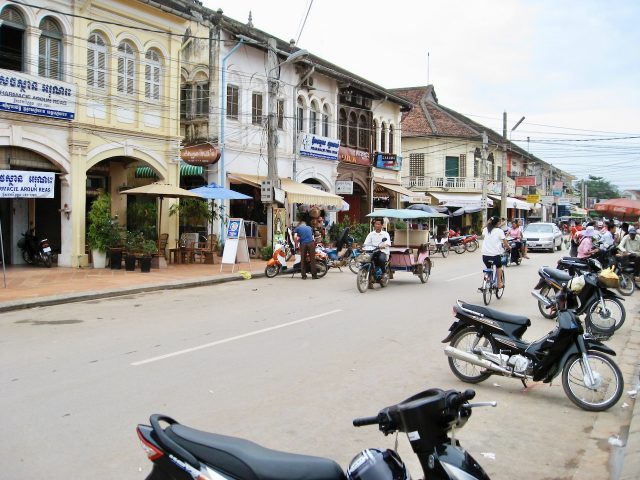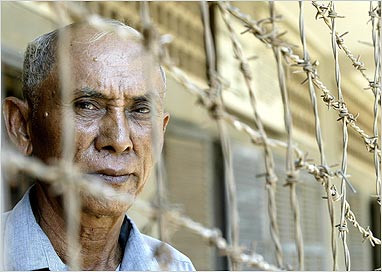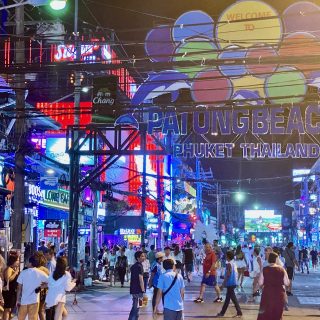This week’s edition of ‘A world of inspiration‘ is brought to you by Andy Hayes who is based in Scotland. Andy shares with us a brilliant account of his travels through Cambodia, his experiences there and the tragic yet inspirational life story of a Cambodian prisoner of war he had the privilege of meeting at the infamous Tuol Sleng Prison, nowadays the genocide museum in Phnom Penh.
A survivor of the Tuol Sleng Prison
One of the reasons I travel is to have different experiences I’d never have at home – sometimes they’re good experiences and sometimes they’re so powerful that I can’t decide what to make of them. That’s kind of how I feel looking back at Phnom Penh, Cambodia’s capital city. The Cambodian people have seen so much happen to them over the years, and the scars are still left – mostly mental, but in some cases, such as the disfigured limbs of land mind victims, it is physical too. It’s all a lot to take in, and the city doesn’t give you time to acclimate before hitting you with it. Once you leave the safety of the airport compound, the cries for your attention (and your money) never cease.

Although Cambodia is a far more popular tourist destination since previously inaccessible areas are now wide open, it’s still a very rough place. Exploring the countryside without a guide is a death sentence as unexploded land mines dot the landscape. Few realise that many members of the Khmer Rouge – the band of leaders who committed the heinous crimes we all have heard about – are actually still in power as members of the ruling government party. They spend their time in various locations in Phnom Penh enjoying themselves and causing trouble. In fact, most guidebooks will tell you the places to avoid. There’s something about the country still unsettling. You can’t put your finger on it, and while I was never directly in danger, I never let my guard down.
Despite all this angst and emotion, I found the Cambodian people some of the happiest, friendliest, and welcoming of all the foreign cultures I’ve met. Our guides in both our base camps in Siem Reap and Phnom Penh were so funny – and they were always quick to inform us of the historical significance of anywhere we toured. They didn’t do it in a sad, regretful way; it was always, in a way, saying: “this is what happened – you should know – don’t forget.”
Visiting the Tuol Sleng genocide museum
But my perspective really changed the day our guide took us to Tuol Sleng prison in the heart of Phnom Penh. This is the infamous high-school-turned-prison (now the genocide museum) where the Khmer Rouge committed torture and genocide. Our guide was giving us various stories and information about what happened, although I noticed it was getting a little difficult for him. I could relate – just hearing about it was difficult enough for me.
When we reached the individual cells where prisoners were kept, our guide introduced to Chum Mey, a wise-looking old man who was just standing over in a corner by himself. As our guide translated, I was shocked to learn that Mey was one of the twelve survivors of Tuol Sleng, one of only three still alive, and the only one living in Phnom Penh! Unbelievable – I had so many questions but just stood and listened. He explained how he was kept inside the tiny cell where he had to keep his toilet facilities as neat as possible (unsurprisingly, the conditions were fetid). He reflected back on people he knew who were killed at the jailer’s hands. He explained in detail – hand motions included – the various acts of torture, from waterboarding to shock treatment. Even just writing about it makes me ill.

I couldn’t believe that after all that, Mey had the strength to come back to this horrible place and tell people his story. Many of us would curl up into the fetal position and hope it was all a dream. Not only that, but he’s a key witness in the Khmer Rouge trials; no doubt living with that over his head must be an emotional strain.
Even though we didn’t speak a common language and we communicated via our guide as a translator, Mey looked us straight in the eyes as he spoke. Bright, big eyes, full of vigor and spark. After all that, he refused to be beaten town. And he still refuses – I’m sure until his last days he’ll be out at that prison or elsewhere, telling his story and, like the rest of the Cambodian people, reminding us: “this is what happened – you should know – don’t forget.”
About this week’s guest writer
Andy Hayes is a professional travel writer and photographer based in Edinburgh, Scotland. When he’s not helping out small businesses in travel and tourism with his professional services, he is documenting his world-wide travelogues on his inspirational travel blog, Sharing Experiences.











[…] A Survivor […]
[…] A Survivor […]
[…] A Survivor […]
[…] A Survivor […]
[…] A Survivor […]
I echo everyone else’s sentiments. It rocks you to the core seeing and hearing about the artrocities that were committed by the Khmer Rouge. Our guide also spoke about not forgetting the past and said it was particularly important to convey this through the schools to the younger generation of Cambodians.
The Cambodian people’s optimism and joy is the real thing that lingers with me and I guess I saw some of that optimism turned into progress when I visited Siem Reap.
@Dave & Deb – I wonder if *everyone* feels that way, or if it’s just cool people like us?
@Jen – thanks for your comments. I hear what you’re saying. 🙂
Andy wrote a very moving piece and captured the exact feelings that we felt during our travels in Cambodia.
Tuol Sleng was one of the most difficult places we have visited in our travels. It is impossible to not become emotional while looking at the photo’s and paintings, the torture rooms and tiny cells.
Like Andy’s guides, ours felt the same way. That we should know about the horrors of the Khmer Rouge Regimes rule and not forget.
Wow, Andy! I can’t even say, “this is a great post” – because the events at Tuol Slang were horrendous. But the message behind is so powerful. So, I am saying, “this story has such a moving message” !!! It really is a great piece for Keith’s World of Inspiration Series.
Thanks Jen! It certainly is a moving message. I can definitely relate to Andy’s experiences with the Cambodian people. I had the same when I was there last year. Despite their horrific past, they’re some of the friendliest, most hospitable, cheerful people I know. Truly remarkable!
Cheers,
Keith